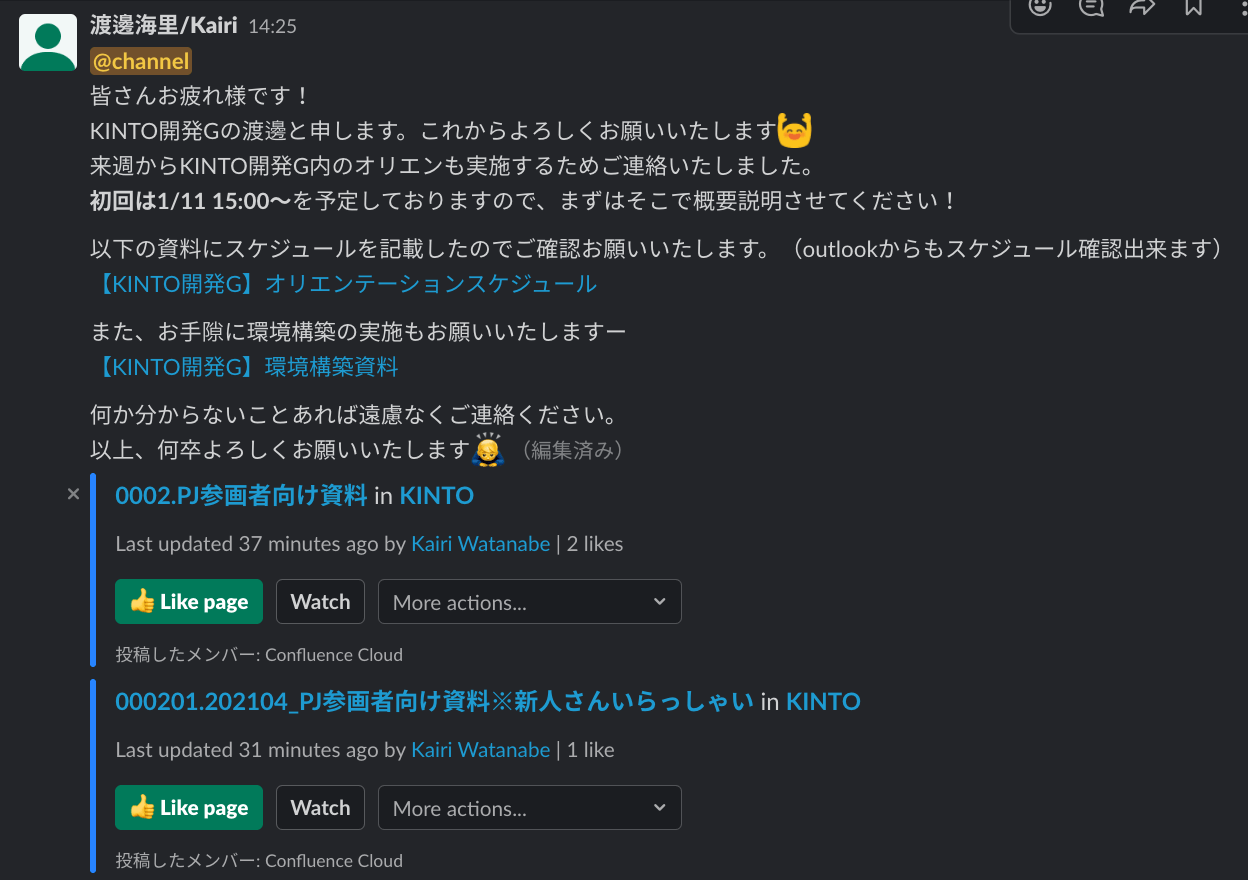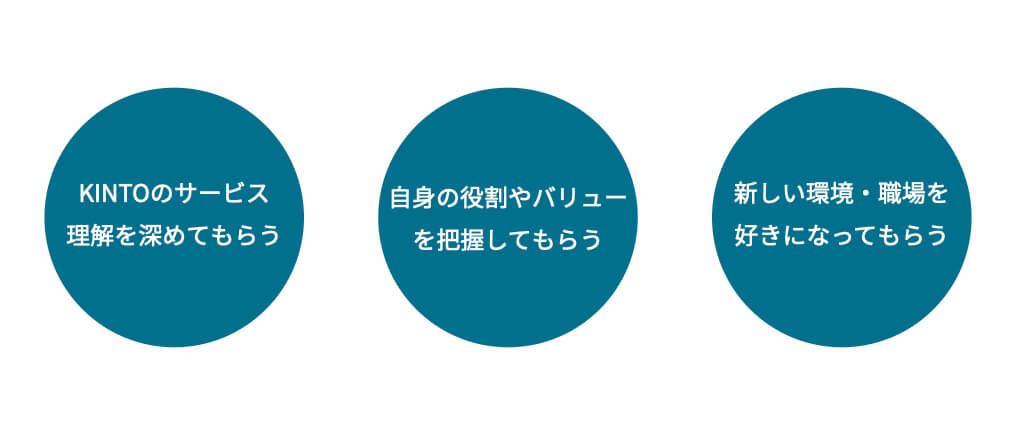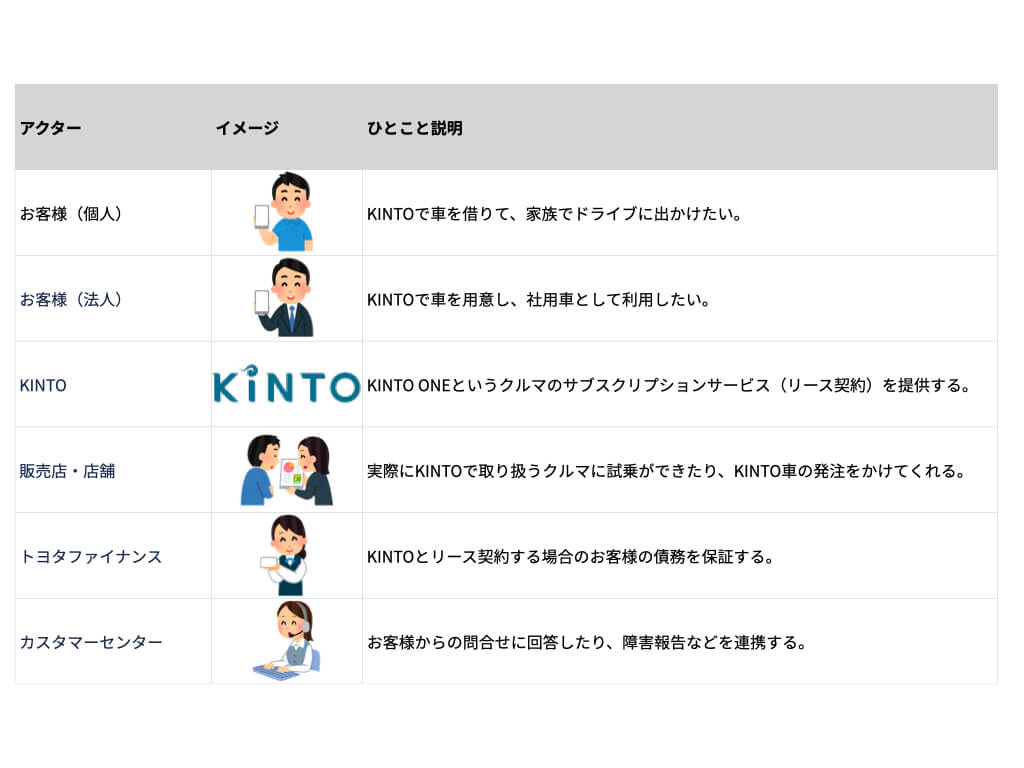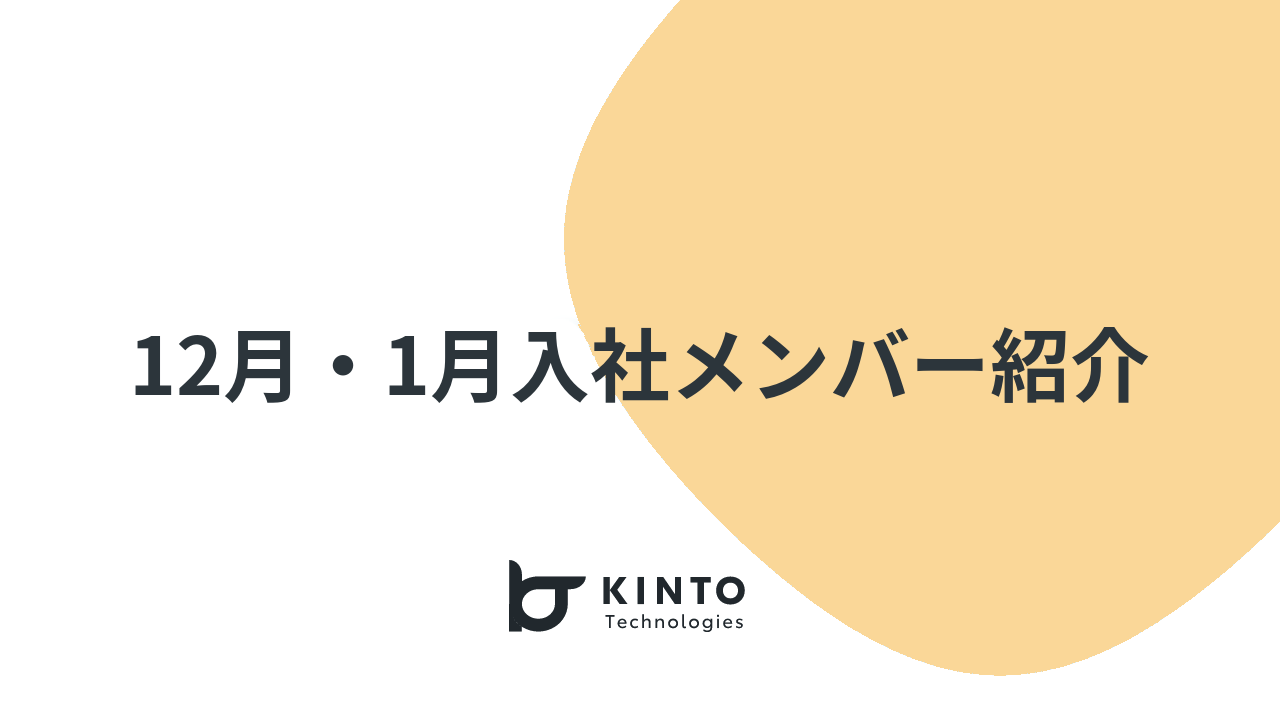中途入社者へオリエン研修を実施するべき理由と4つのアプローチ

はじめに
こんにちは、KINTOテクノロジーズでフロントエンドを担当している渡邊です。普段はKINTO開発グループの一員として、国内向けKINTO ONEサービスをReact.jsなどのフレームワークを用いて開発しています。エンジニア集団であるKINTO開発グループでは、毎月数名の新メンバーを受け入れていますが、規模の大きなシステムで業務領域全体を理解することは複雑であると考えています。そこで、毎月中途入社者向けのオリエンテーションを実施し、新メンバーがいち早く活躍出来るようサポートしています。本記事では、なぜ中途入社者向けのオリエンテーションは重要なのかと、実際に行っているオリエンテーションの中身をご紹介したいと思います。

グループ内オリエンテーションのアナウンス
オリエンテーションを実施するべき理由
中途入社者がいち早く社内で活躍するためには、早期に職場環境に慣れ、日常的なコミュニケーションからチームでの人間関係を構築することが不可欠です。新卒社員とは異なり、社会人経験があるため、中には「オリエンテーションは必要ない」と考える方もいるかと思います。しかしながら、中途入社者であっても環境の変化にすぐ適応できるとは限りません。前職との仕事のやり方の違いや業界や社内の専門用語が分からないために、入社間もないにも関わらず、不安やモチベーション低下を感じている方もいるかと思います。私たちのチームでもオリエンテーションを行っていなかった当時は、具体的な業務にアサインされるまで何から手をつけていいのか分からず、自席で困惑しているメンバーも見受けられました。また先輩社員も業務の合間を縫って、手取り足取りレクチャーすることは負荷がかかります。
このような課題に対し、KINTO開発グループでは、独自に設計したオリエンテーションを通じて、中途入社者の不安や戸惑いを解消することで、その後の業務にも良い影響を及ぼすと考えています。中途入社者にいち早く会社に馴染んでもらえるよう、以下の3つを目的にオリエンテーションを設計・実装しました。
-
KINTOのサービス理解を深めてもらう
-
自身の役割やバリューを把握してもらう
-
新しい環境・職場を好きになってもらう

オリエンテーションを組み立てる4つのアプローチ
それでは、私たちが実際に行っているオリエンテーションを4つご紹介いたします。各回60分ほどの講義形式になっていて、先輩社員が講師役を担って進行します。
- プロダクト・チーム紹介(KINTO開発グループへようこそ!)
グループ内のどのチームでどのような業務を行っているかを、顔つきの相関図を用いて紹介します。入社したばかりで顔と名前が一致しない中でいきなり業務に入ることに不安を感じるという声が多く、オリエンテーションの一番初めに実施しています。チーム構成やプロダクトメンバーを何となくでも把握しておくことで、困ったときに誰に聞いたらいいかを明確にすることが出来ます。
- サービス・業務説明(ハンズオンを通じてサービスの流れを体験しよう!)
KINTO ONEのサービスの流れをハンズオン(シナリオ)を通じて体験してもらいます。サービスに登場する様々なアクターになりきって、ウェブ画面を操作することで、今後業務で関わるステークホルダーを把握することが出来ます。また、登場人物や用語などを図を介して説明することで、自動車業界に携わってない方でも、理解を深めることが出来ます。

- システム概要説明(使われているシステム・技術について理解しよう!)
実際に稼働しているシステムの裏側について、鳥瞰図を用いて紹介しています。システム全体の構成要素や機能、相互作用について事前に把握することで自身の担当・専門領域が明確になり、スムーズにプロジェクトイン出来ると考えています。技術スタックについての質疑応答もこちらのオリエンテーションを通じて行われます。
- ウェルカムランチ(先輩社員と仲良くなって会社を好きになろう!)
実は一番大事なコンテンツだと考えています!複数の先輩社員とざっくばらんと会話することで、社内の雰囲気を感じることが出来ます。堅苦しい内容は抜きにして、新入社員の方に居心地の良さを感じてもらうことを目標に実施しています。オフィス周辺のランチ情報をSlackチャンネルに流したりと社内にはグルメな方が多いです😋(座敷や掘りごたつがあるお店などを選ぶと会話が弾みます笑)
オリエンテーションを実施してみて分かったこと
オリエンテーションを毎月行っていく中で、多くの知見や課題を発見することが出来ます。
- オリエンテーションは自由に作れる
普段の開発業務と同様に、オリエンテーションも設計や実装が必要です。バックグラウンドや年齢が異なる中途入社者だからこそ、メンバーに合わせて、言葉を噛み砕いて説明・議論しています。特にクルマの知識がない方でも理解していただけるように、サービスの関わる登場人物を図を用いて説明したり、逆質問から認識齟齬が無いように努めています。全行程終了時には理解度や有効度を測るためにアンケートを取り、今後のオリエンテーションのためにナレッジを蓄積します。月ごとに柔軟にカスタム出来るのもオリエンテーションの面白さの一つです。
- 同期の仲が深まる
入社間も無く不安を感じている中途入社者にとって、同期入社のメンバーは心の拠り所になると思います。新メンバーには同タイミングで研修やハンズオンを体験してもらうので、メンバー同士で試行錯誤する風景が見受けられます。そこで毎月入社する新メンバーとオリエンテーション担当者でのSlackチャンネルを作成し、気心が知れた同期とコミュニケーションが生まれるように工夫しています。実際、「大人数がいるチャンネルより小規模のグループの方が発言しやすい」という方が多いです。入社オリエンテーションを通じて、同期の仲が深まるきっかけになることは、オリエンテーションを担当していてやりがいを感じる瞬間です。
- 先輩社員(担当者)の業務理解が深まる
オリエンテーションは先輩社員による講義形式で行われます。オリエンテーション用のドキュメントを作成する中で、他グループからヒアリングをしたり、再度ハンズオンをトライすることで、これまで知らなかった・気づけなかった業務知識が増えたりします。そのためにも、定期的なドキュメントのアップデートも必要です。オリエンテーションは新入社員のためのものと思われがちですが、先輩社員にとっても有意義なものです。先述したアンケートも毎回担当者に共有しています。
まとめ
エンジニア組織において、オリエンテーションの最大の効果は、新メンバーの「不安を取り除き」ながら、短期集中して「業務知識を得る」ことで、いち早く「プロジェクトに貢献」出来、ユーザーに「価値を提供」し続けられることだと思います。
中途入社者は、細かな指導をしてもらう機会はなかなかありません。分からないことがあれば自分で調べるという風潮があります。もちろん自力解決が一番ですが、入社して間もない仲間をサポートする体制を作ることで、円滑なコミュニケーションが取れる風通しの良いチームになると思います。
今後は、これまで以上に中途入社者をサポート出来るよう、アンケートやツールを用いてオリエンテーションをアップデートしていきたいです。また、多くのグループメンバーがオリエンテーションに携わることで、多角的にコミュニケーションが生まれ、よりクオリティが高くオリジナルなオリエンテーションが作れると思います。
皆さんの会社で実施している面白いオリエンテーションなどもシェアしていただけると幸いです!
関連記事 | Related Posts

Meet Our New Team Members: December and January 2024 Update

Meet Our New Team Members: November 2023 Update

Project Promotion Group Introduction

Meet Our New Team Members: February and March 2023 Update

How We Bolstered All-Employee Meetings

What’s this 40-something person with no web experience doing here?
We are hiring!
人事戦略部長|経営直下でゼロから創るHR組織
【人事部門立ち上げに伴う責任者募集】人事部門の責任者として経営戦略の実行において、経営と現場をつなぐ戦略的人事の実行、急成長と変化に対応するアジャイルな人事オペレーションを実行していただくことを期待しています。KINTOテクノロジーズでは開発支援部内に人事グループを設置し、採用や人材育成などの機能を担っています。
【プロジェクトマネージャー(iOS/Android/Flutter)】モバイルアプリ開発G/東京
モバイルアプリ開発GについてKINTOテクノロジーズにおける、モバイルアプリ開発のスペシャリストが集まっているグループです。KINTOやmy routeなどのサービスを開発・運用しているグループと協調しながら、品質の高いモバイルアプリを開発し、サービスの発展に貢献することを目標としています。
